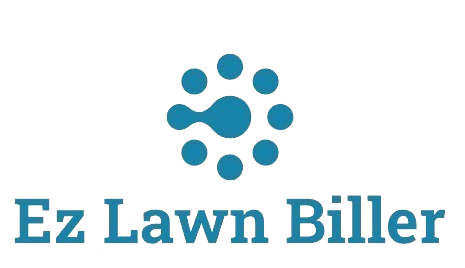Unlock the potential of your lawn care business by learning how to analyze its performance effectively. This guide will provide you with essential insights and strategies.
How to Analyze Performance Your Lawn Care Business
Analyzing the performance of your lawn care business is crucial for growth and sustainability. In an industry where customer satisfaction and service quality are paramount, understanding your business metrics can provide you with valuable insights. This blog post will explore various methods for evaluating your business performance, including key performance indicators (KPIs), customer feedback, financial metrics, and operational efficiency. You’ll also learn how to use technology, like effective lawn billing software, to streamline your analysis and improve your business decision-making.
In the competitive world of lawn care, staying ahead means not just providing excellent service but also understanding how your business operates. By the end of this article, you’ll be equipped with actionable strategies to assess and enhance the performance of your lawn care business.
Understanding Key Performance Indicators (KPIs)
The foundation of analyzing any business starts with key performance indicators (KPIs). For a lawn care business, KPIs can include metrics such as customer retention rate, service completion rate, and average revenue per customer. By tracking these indicators, you can gauge the overall health of your business.
For instance, a high customer retention rate often indicates that your clients are satisfied with your services. Conversely, a low retention rate may signify underlying issues, such as inconsistent service quality or ineffective communication. To enhance your performance, regularly review these KPIs and make adjustments based on what the data reveals.
Another important KPI is the average revenue per customer. This metric helps you understand how much each customer contributes to your bottom line. By enhancing your services, you can increase this figure, allowing for better profitability and growth opportunities.
Utilizing Customer Feedback
Customer feedback is a goldmine of information that can guide your business improvements. Establishing a system for collecting feedback through surveys or follow-up calls allows you to understand customer perceptions better. Use tools like lawn service software to streamline this process, making it easier to gather and analyze responses.
Consider implementing regular customer satisfaction surveys to obtain actionable insights. For example, ask clients to rate various aspects of your service, such as timeliness, quality of work, and professionalism. Analyzing this feedback can help identify trends and potential areas for improvement.
Moreover, don’t underestimate the power of online reviews. Monitoring platforms such as Google and Yelp can give you an overview of customer sentiment. Addressing negative feedback promptly not only helps resolve issues but also shows prospective clients that you care about their experiences.
Financial Metrics for Success
Analyzing financial performance is critical for the longevity of your lawn care business. Key financial metrics include profit margins, operating costs, and return on investment (ROI). Understanding these figures will help you make informed decisions regarding pricing strategies and service offerings.
Profit margins, for example, indicate how much money you retain after covering all operational costs. A low profit margin may prompt you to reevaluate your pricing or consider cost-saving measures. Additionally, utilizing a lawn company app can provide you with real-time financial tracking, giving you a clearer picture of your economic health.
It’s also essential to monitor operating costs closely. Regularly assessing expenses helps you identify areas where you can cut costs without sacrificing service quality. By implementing a comprehensive service company software solution, you can automate many tasks, thus reducing labor costs and increasing efficiency.
Assessing Operational Efficiency
The efficiency of your operations can significantly impact service quality and customer satisfaction. To assess this, consider analyzing the time taken to complete various services and the effectiveness of your team. Implementing a lawn service app can help streamline operations and ensure that everyone is on the same page.
For example, track how long it takes to complete a typical mowing service versus a fertilization job. This data can help identify whether certain services require more resources or if there are ways to optimize your schedule to minimize downtime.
Another aspect of operational efficiency is the use of technology. Integrating a lawn service computer program can help automate scheduling, invoicing, and customer management, leading to a more streamlined business operation. By reducing administrative burdens, you can focus on delivering superior lawn care services.
Implementing Technology for Performance Analysis
In today’s digital age, leveraging technology is essential for analyzing and improving business performance. Utilizing lawn company computer programs can facilitate data collection and analysis, allowing you to make quicker, informed decisions.
For instance, software solutions like EZ Lawn Biller allow you to track services, automate billing, and generate reports effortlessly. These features enable you to focus more on client interactions and less on paperwork. By keeping detailed records of services rendered and payments received, you can quickly identify trends and adjust your strategies accordingly.
Moreover, many modern software solutions offer analytics features that can help you visualize performance metrics. Using dashboards, you can monitor KPIs in real-time, making it easier to stay on top of your business’s health. Embracing such technology can provide a significant competitive edge in the lawn care industry.
Setting Goals for Continuous Improvement
Once you’ve analyzed your performance, it’s crucial to set achievable goals based on your findings. Establishing short-term and long-term goals will help guide your business strategy. For example, if you find that your customer retention rate is low, a short-term goal might be to implement a loyalty program to encourage repeat business.
In contrast, a long-term goal could involve expanding your services or reaching a specific revenue target. Whatever your goals may be, ensure they are SMART—Specific, Measurable, Achievable, Relevant, and Time-bound. This approach will help you track progress and make necessary adjustments along the way.
Regularly revisiting your goals will keep your team focused and motivated. Celebrate small victories and use them as motivation to tackle larger challenges, fostering a culture of continuous improvement within your organization.
Enhancing Employee Training and Performance
Your employees are the backbone of your lawn care business, and investing in their training can yield significant returns. Regularly assess their skills and knowledge to identify areas for improvement. Consider implementing training programs focused on customer service, technical skills, and safety practices.
For instance, equipping your team with knowledge about the latest lawn care techniques can elevate service quality. Additionally, encouraging a customer-centric mindset among your staff can enhance client satisfaction. When employees feel confident and capable, they are more likely to deliver exceptional service.
Moreover, fostering an environment that encourages feedback and open communication can help you identify performance gaps quickly. Regular performance reviews can guide individual development and enhance overall team effectiveness.
Leveraging Marketing Strategies to Boost Performance
Marketing plays a vital role in attracting and retaining customers. To analyze the performance of your marketing strategies, track metrics such as lead conversion rates, customer acquisition costs, and return on marketing investment.
Investing in digital marketing can expand your reach. Using social media platforms, search engine optimization (SEO), and pay-per-click advertising can attract new clients. Additionally, consider using local SEO strategies to target specific markets, particularly in cities where your services are in high demand.
For example, if you’re operating in Atlanta, focusing your marketing efforts on local SEO will help you appear in relevant searches for lawn services in that area. This strategic approach can lead to higher visibility and more inquiries, ultimately boosting your revenue.
Conclusion
In conclusion, analyzing the performance of your lawn care business is an essential step towards sustainable growth. By focusing on key performance indicators, leveraging customer feedback, and utilizing technology, you can gain valuable insights into your operations.
Setting clear goals, investing in employee training, and employing effective marketing strategies will further enhance your business performance. Remember, consistent analysis, and adaptation to market demands are keys to success in the lawn care industry.
Take the first step today by implementing the strategies outlined in this article. Your lawn care business’s future success depends on your ability to analyze and improve its performance continuously. Explore tools like [Lawn Biller Software](https://ezlawnbiller.com/) to make the process easier and more effective.




